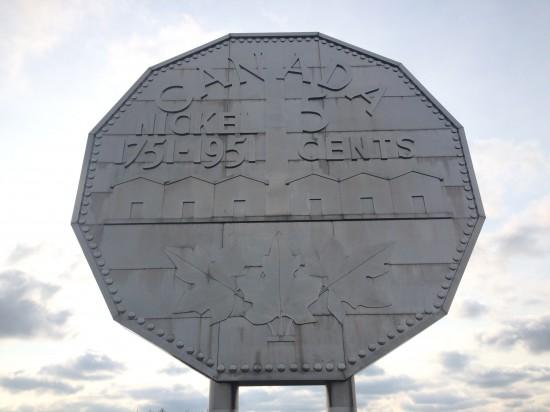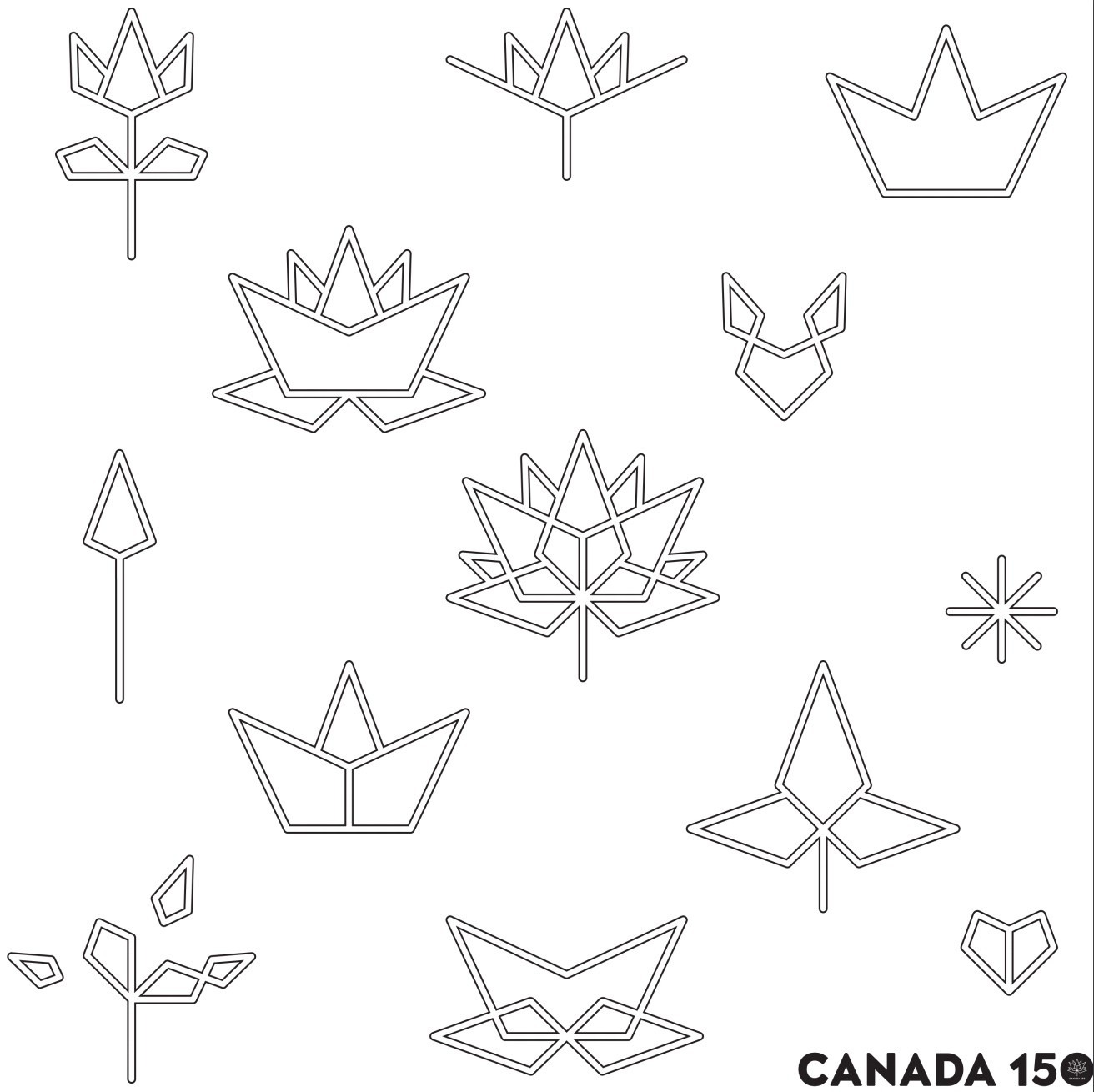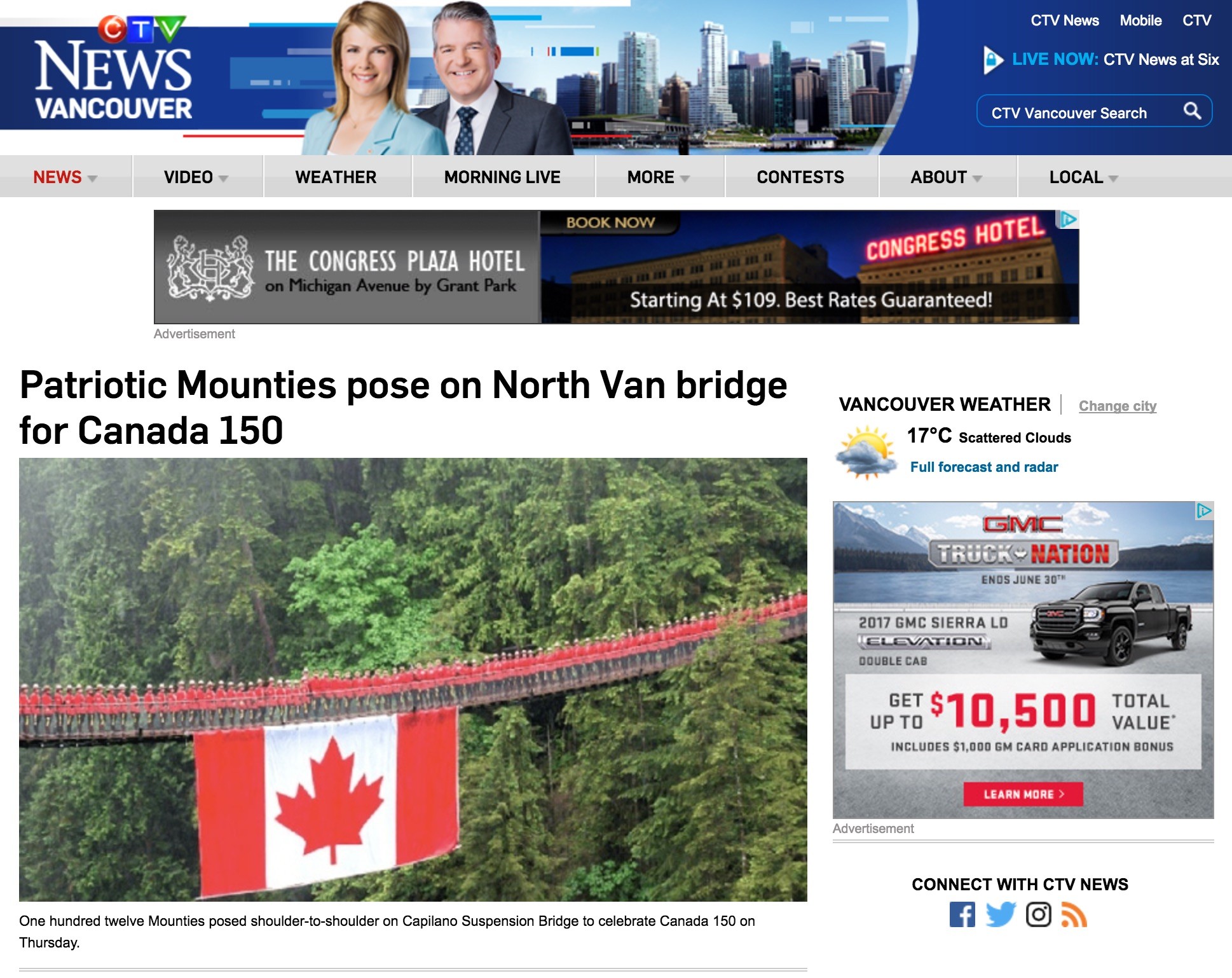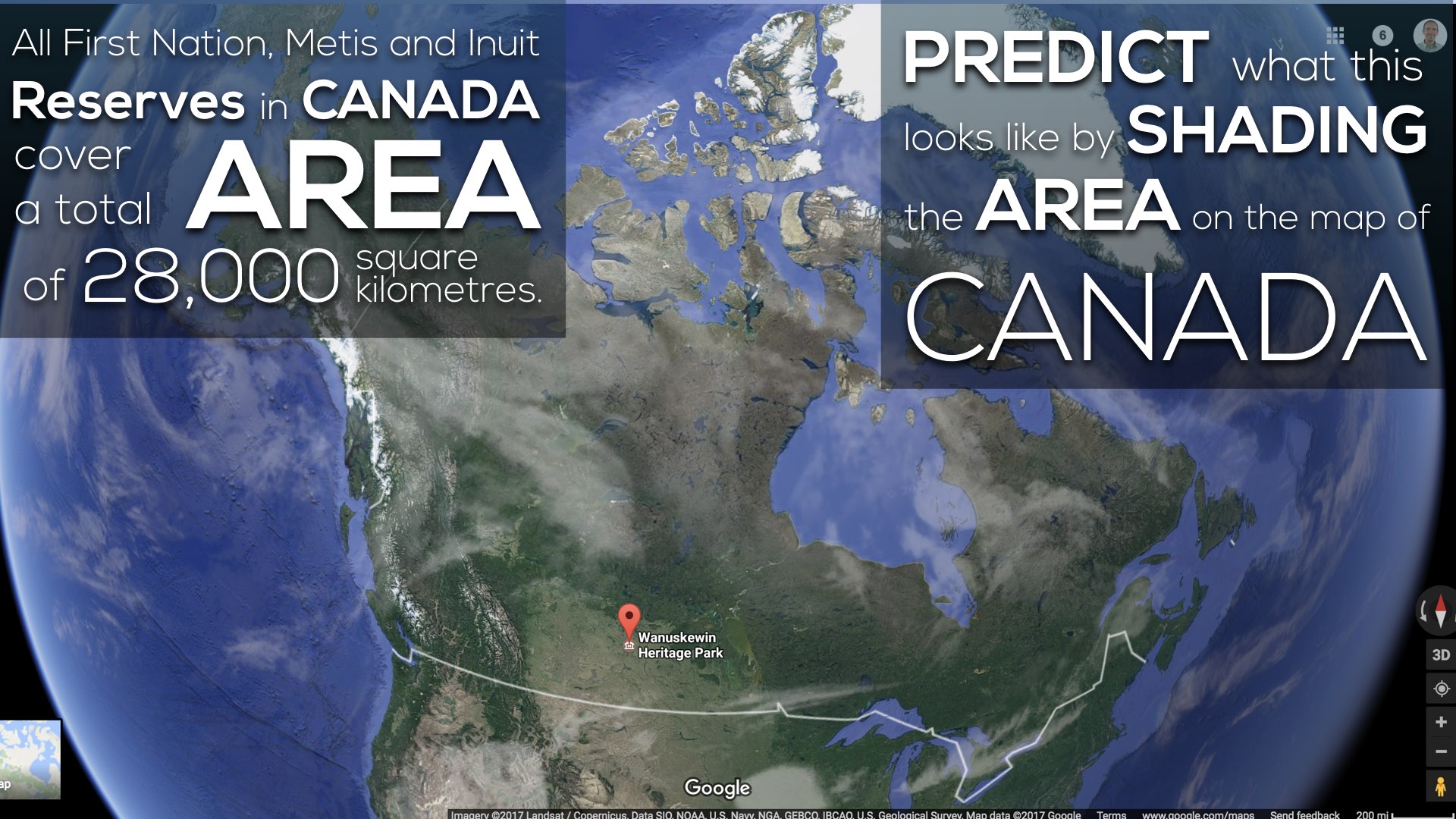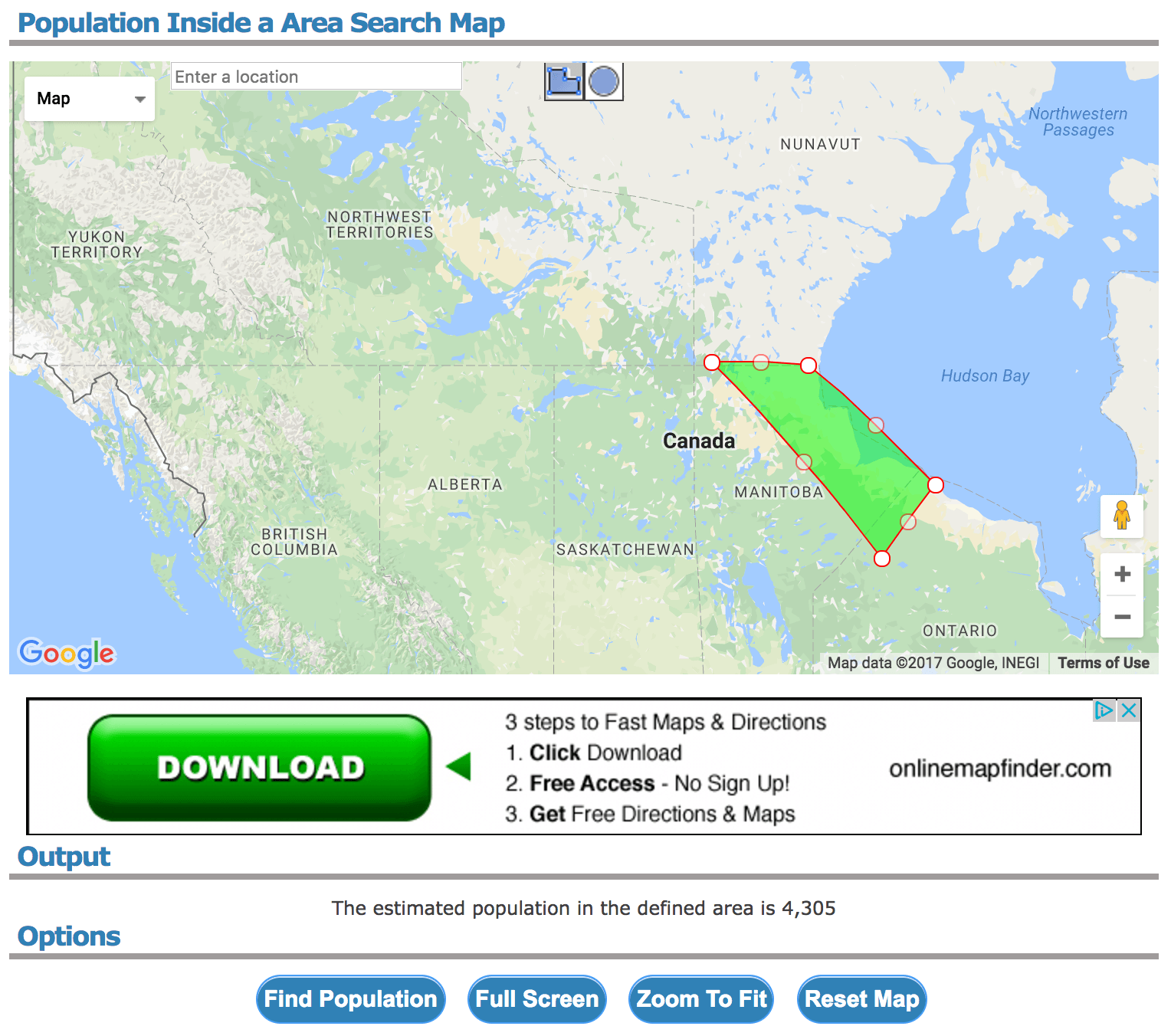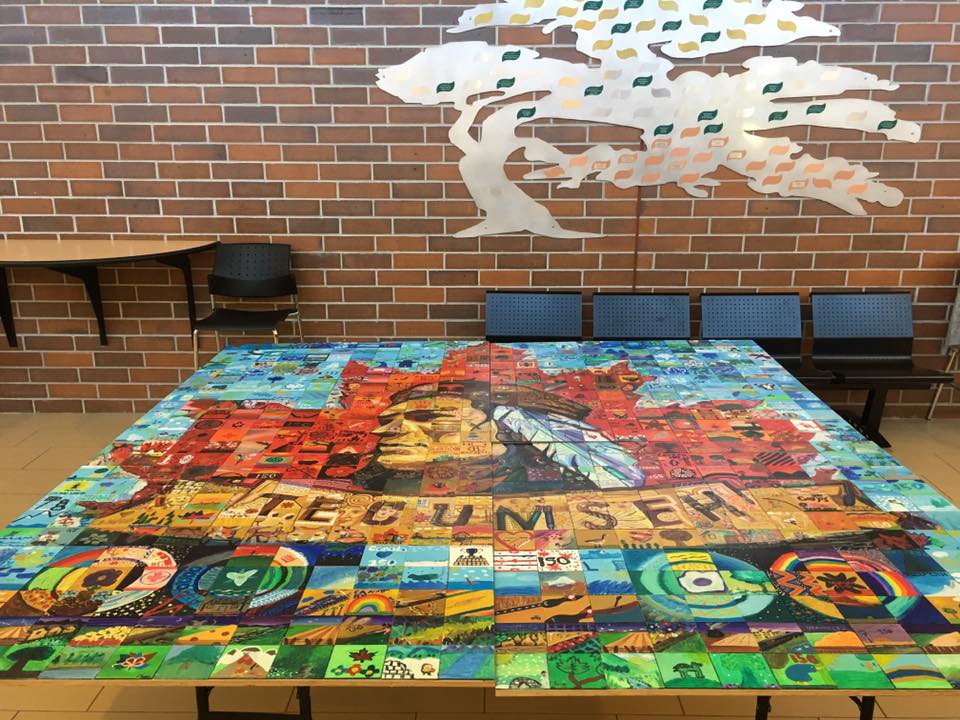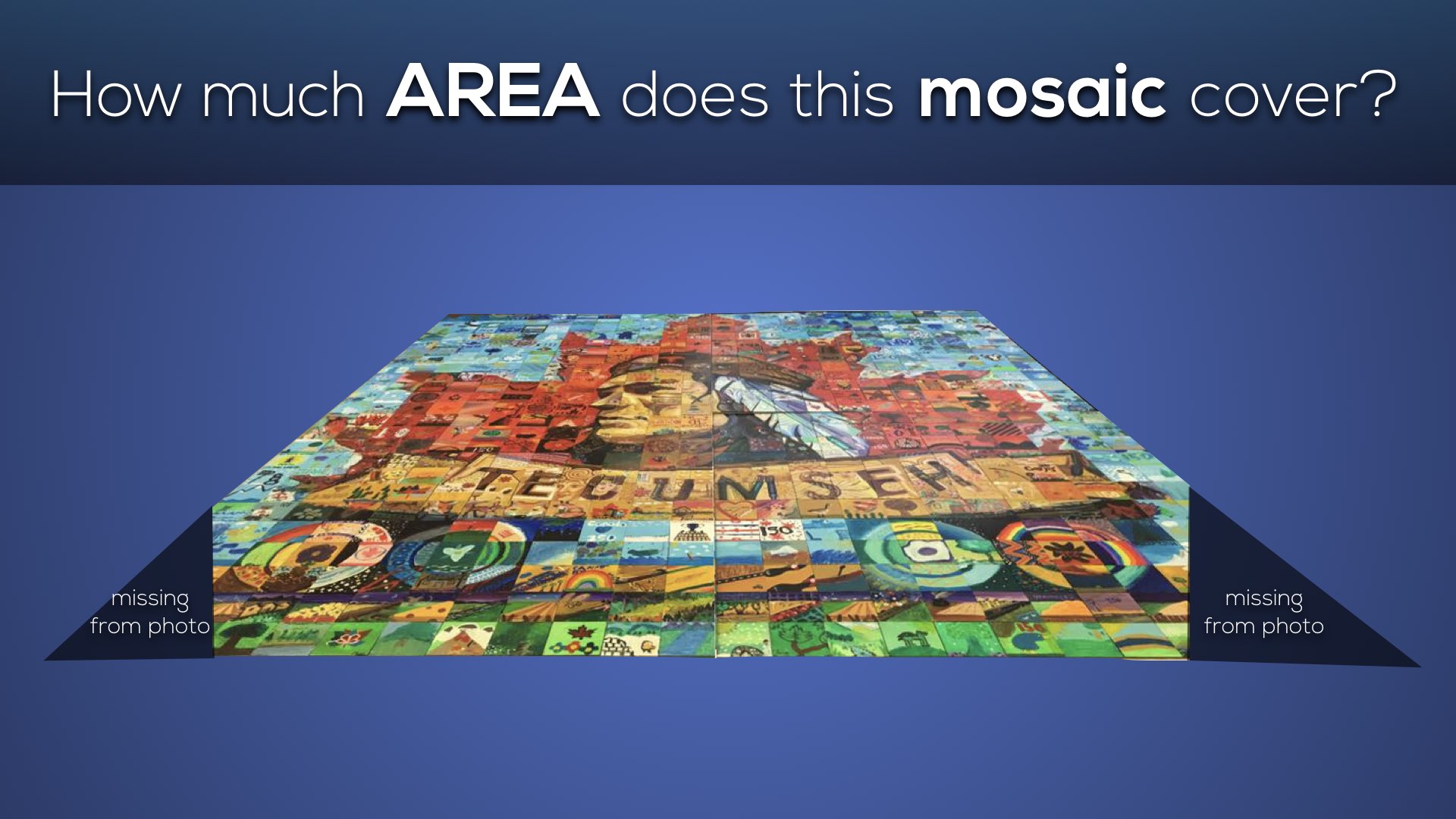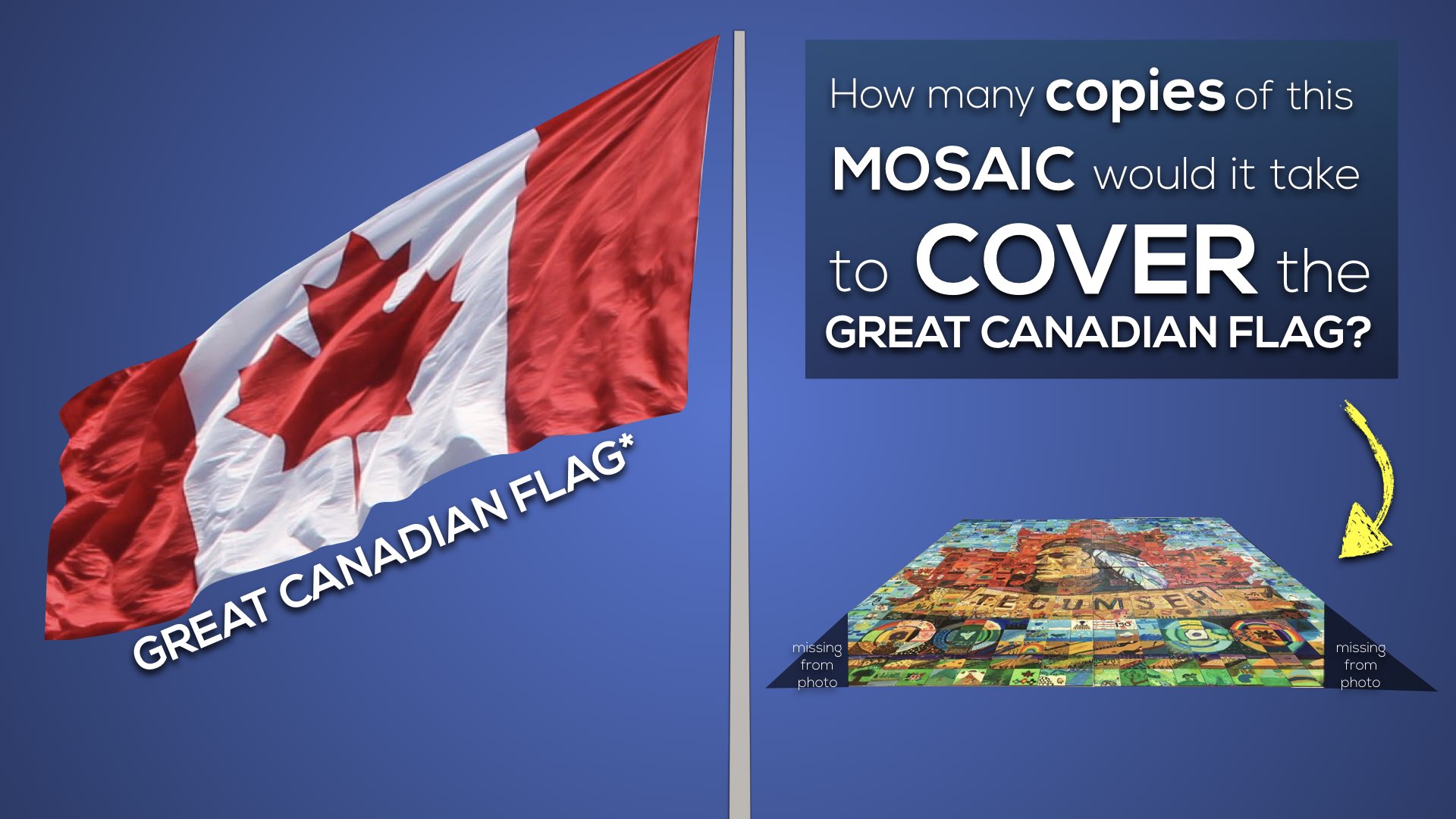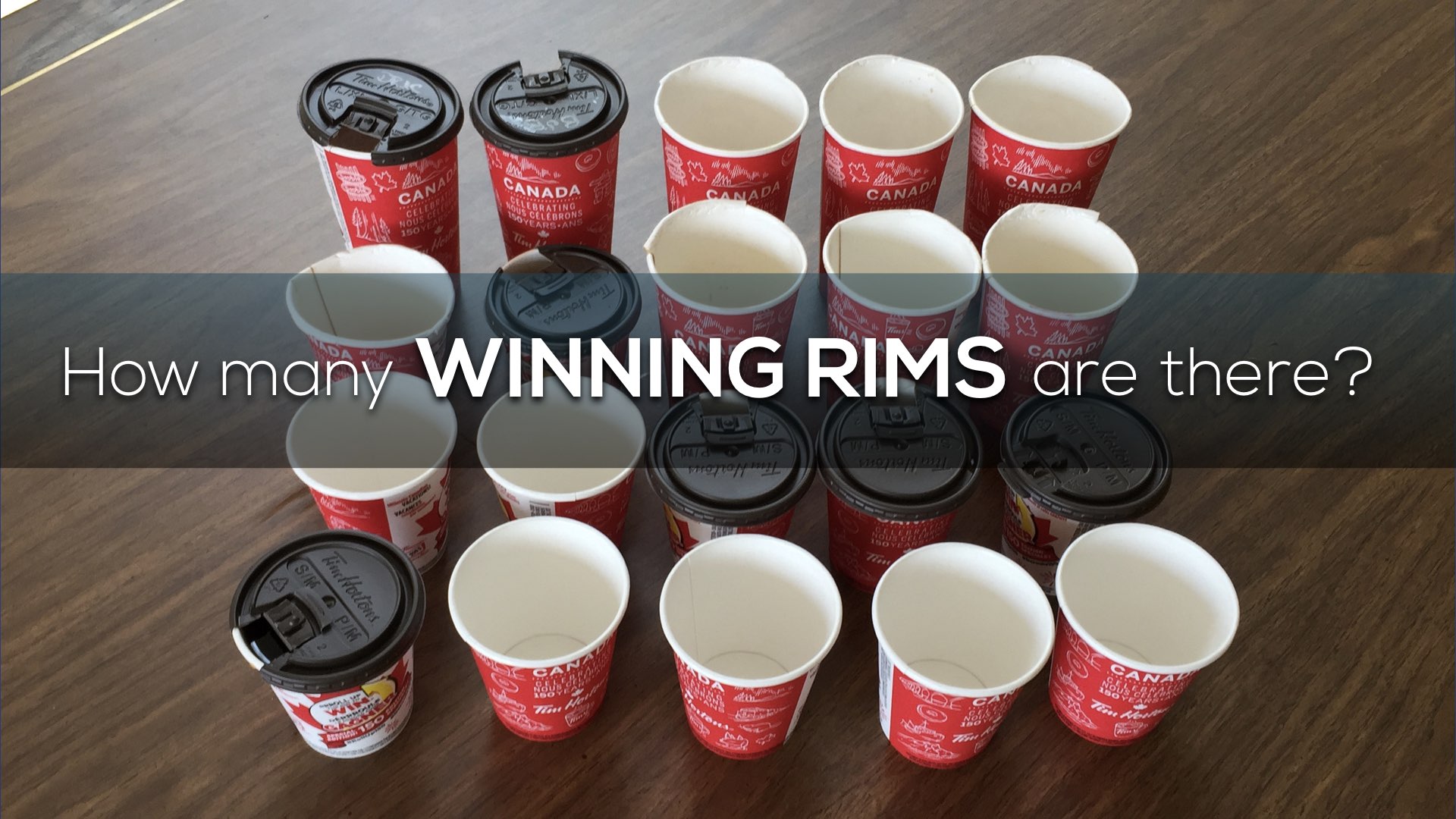Celebrate Canada’s 150th Birthday With a Month of Math
With the recent raising of The Great Canadian Flag at the foot of Ouellette Avenue on Windsor’s waterfront, the excitement surrounding Canada’s 150th Birthday is well underway. Through the work of my Math Strategy Team at the Greater Essex County District School Board (GECDSB), we are inviting staff, students and their families to participate in a month of math to celebrate.
During the month of June we are encouraging the GECDSB and the rest of Canada to join us in celebrating our nation’s birthday through mathematics!
Here are some ways you can participate:
- Try some of our Canada 150 Math Challenges that will be posted at the bottom of this page
- Follow us on Twitter: @Canada150Math
- Post your Canada 150 Math thinking on social media using #canada150math
- Share your own Canada 150 Math Challenges with your colleagues and school community
How It Works:
- Each school day during the month of June, we will post a math question/task/provocation related to Canada via our Twitter account as well as at the bottom of this page.
- Feel free to use the questions provided by us OR create your OWN problems related to Canada’s 150th Birthday!
- Then, be sure to share out photos and videos of questions, students engaging in the math as well as their thinking by tagging our Twitter Account @Canada150Math with the hashtag #Canada150Math.
The GECDSB Math Strategy Team and I are excited for the opportunity to connect Canada’s 150th Birthday to mathematics during the month of June.
Are you ready to get started?
Check out the challenges below! There will be a new one to explore in your classroom, at home or in your community to mathematize Canada’s 150th Birthday Celebration!
#Canada150Math Challenge Tasks
Thursday June 1st & Friday June 2nd – #Canada150Math Challenge Kick-Off
Yesterday, we kicked off the celebration at Dr. D. Suzuki Public School in Windsor, Ontario. There, we explored the first two questions which will cover June 1st and 2nd with a bang:
How many “Mr. Pearces” tall is the Great Canadian Flag?
and
How many “Great Canadian Flags” tall is the Renaissance Center?
Checkout both 3 act math tasks on the page below with all the videos, photos and slide decks for Keynote and/or Powerpoint:
[threeactshortcode the_query=”post_type=realworldmath&p=19204″]
Day 3: Monday June 5th – Big Nickel
How many nickels would it take to make The Big Nickel in Sudbury?
Or, alternatively, you might choose to use one of the extension tasks included in The Big Nickel such as:
- How much would it cost to make the Big Nickel out of actual nickels?
- How big would the Big Nickel be if we used all of the nickels in circulation?
- Or any other idea you feel!
Day 4: Tuesday June 6th – How Many Kites in the #Canada150 Logo?
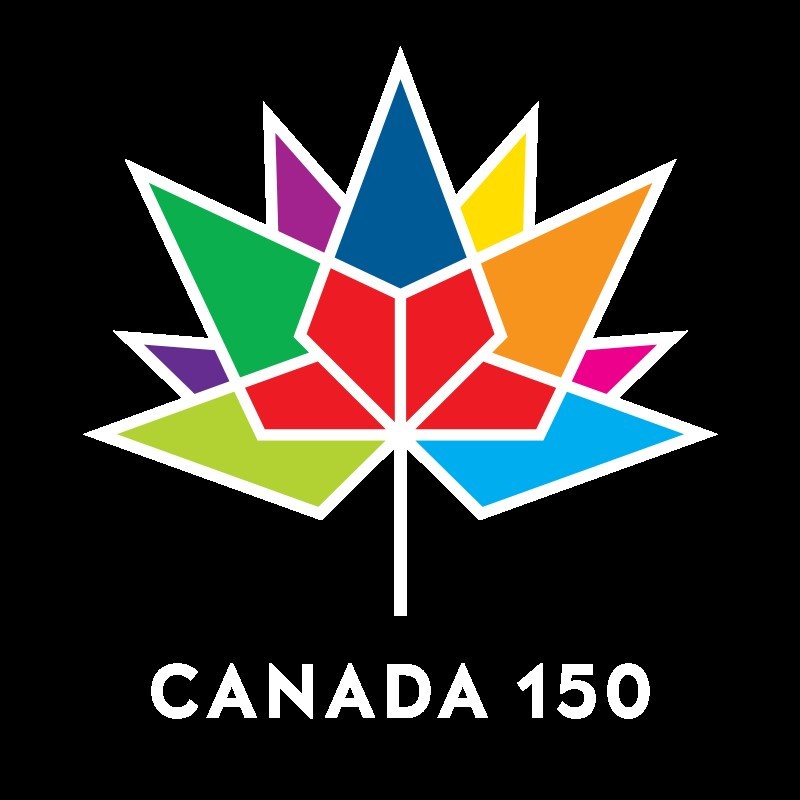
Here are a few questions to consider:
- How many kites are in the Canada 150 logo?
- What fraction of the Canada 150 logo is red?
- What is the interior/exterior angle sum of the Canada 150 logo?
One of the questions that I’m really liking involves Spatial Reasoning and creating art with the logo:
What interesting art can you create with parts/pieces of the Canada 150 logo?
On the Canada 150 Activity Centre page, there are some colouring pages you can print out.
I wonder if any students might come up with something similar to these:
Please discuss this question at home. Have fun with math while celebrating Canada's birthday! #canada150math pic.twitter.com/J9ZPgU2vB6
— Brenda Mackay (@MrsMackayGrade4) June 1, 2017
Grade 1's working on one of the many awesome #canada150math problems! @NMHalbert pic.twitter.com/uKfaXNDMqG
— Mr. Miller (@MrDPMiller) June 5, 2017
We are counting all the kites in the Canada 150 logo #hcdsbmath #canada150math @lclightmilton pic.twitter.com/fXNbRcHKpL
— Ms. Maciel (@Ms_AMaciel) June 5, 2017
We see 12 kites in the Canada 150 symbol. #canada150math pic.twitter.com/uwnjfQR1xP
— Brenda Mackay (@MrsMackayGrade4) June 2, 2017
We made our own Canada 150 symbols using pattern blocks and the Patterns apps on the iPads. @PrinceEdwardPS @Canada150Math #canada150math pic.twitter.com/8tHlDdl608
— Mrs. Myers (@PEMakersPacers) June 1, 2017
Day 5: Wednesday June 7th – How Many Giant Rubber Ducks?
Get ready for our fifth day of #Canada150Math Challenge fun when we try to determine:
How many Giant Rubber Ducks tall is the CN Tower?
Checkout this 3 act math task on the page below with all the videos, photos and slide decks for Keynote and/or Powerpoint:
[threeactshortcode the_query=”post_type=realworldmath&p=19269″]
Day 6: Thursday June 8th – How Many Giant Rubber Ducks Will Fit?
Get ready for day 6 of the #Canada150Math Challenge. Today, we’ll try to determine:
How many Giant Rubber Ducks will fit in the Western Channel?
Checkout this 3 act math task on the page below with all the videos, photos and slide decks for Keynote and/or Powerpoint:
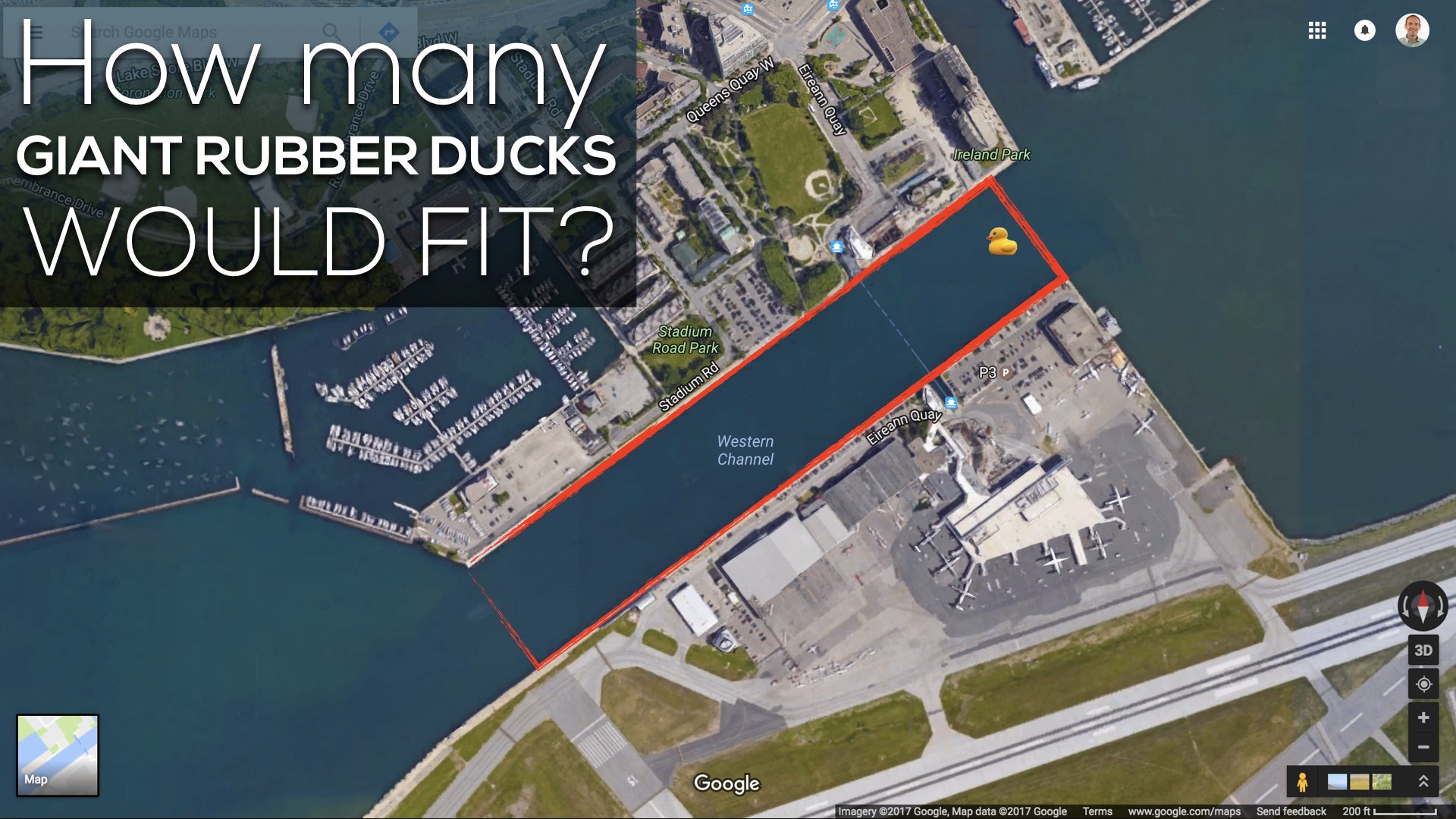
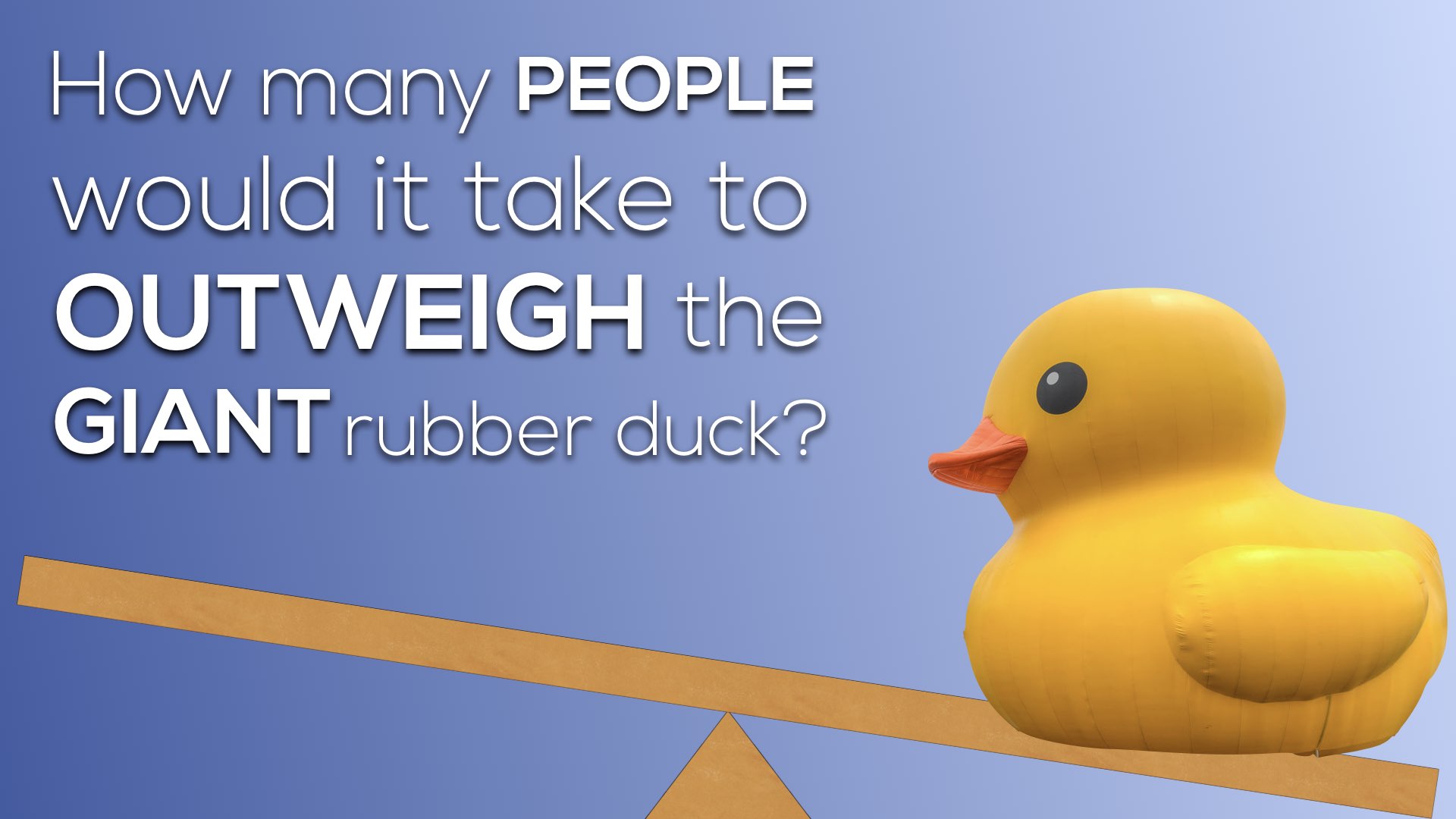
How many people would it take to outweigh the giant rubber duck?
Get all the task resources by clicking the link below:
Day 8: Monday June 12th – How Many Mounties?
This past week, a great #Canada150Math provocation was shared by Carolanne Nadeau on twitter:
https://t.co/C5IVhRN1sQ. This is awesome! #Canada150 #RCMP
— Margaret (@spiritual_gal) June 10, 2017
How many mounties is that?
You can check the full story from CTV below:
Be sure to share all the other noticings, wonderings and math fun that came from this provocation with the hashtag, #Canada150Math.
Day 9: Tuesday June 13th – What Percentage of Canada is Covered By Saskatchewan?
Today, we’re going to determine:
What Percentage of Canada is Covered By Saskatchewan?
Checkout this 3 act math task on the page below with all the videos, photos and slide decks for Keynote and/or Powerpoint:
[threeactshortcode the_query=”post_type=realworldmath&p=19305″]
Day 10: Wednesday June 14th – What Percentage of Canada is Reserved for FNMI Peoples?
What Percentage of Canada is Reserved for FNMI Peoples?
Checkout this 3 act math task on the page below with all the videos, photos and slide decks for Keynote and/or Powerpoint:
Where is the Largest Area of Canada With The Fewest People?
Where is the Smallest Area of Canada With The Most People?
Where is the widest and thinnest rectangular area that has the least people in Canada?
Can you come up with some other interesting questions you might want to explore on the map of Canada?
Day 12: Friday June 16th – Where is the Largest Area of Canada With The Fewest People?
Initially when the #Canada150Math Challenge came up as an idea from the math team at Dr. D Suzuki Public School and my colleague, Heidi Horn-Olivito, a ton of questions were generated to celebrate Canada’s 150th Birthday.
One of the questions related to The Great Canadian Flag that I came up with was:
How many t-shirts would it take to make The Great Canadian Flag?
When I ran some ideas about using The Great Canadian Flag by Jon Orr, he coincidentally came up with a question around beach towels that I thought was pretty slick and a huge step up from randomly calculating the number of T-Shirts:
If we all laid on beach towels, how much of us would we need to cover the flag?
Another way you might want to state this question could be:
How many beach towels would it take to cover the Great Canadian Flag?
Day 13: Monday June 19th – Number Flexibility With “150”
Today, we’re looking at a number talk style warm-up involving Canada’s 150th Birthday.
Here’s some possible questions:
How many tens are in 150?
How many twenties are in 150?
If there are 150 cupcakes to celebrate Canada’s Birthday are to be split amongst your class, how many would each of you get?
Day 14: Tuesday June 20th – July 1st Fireworks!
As we get closer to Canada’s Birthday on July 1st, let’s get ready to celebrate.
Act 1: Spark Curiosity
Show a portion of this video and ask students what they notice and what they wonder.
- Where is this?
- Is this to celebrate Canada Day?
- There are 3 barges setting off fireworks.
Some questions I might ask my students are:
- How long will these fireworks last?
- How many fireworks were lit?
- How much does this cost?
Act 2: Reveal Some Information
With this being the International Freedom Festival on the Detroit River between Windsor, Ontario and Detroit, Michigan, there are quite a few questions we could work with and a lot of information that you can use for your mathematizing. Some details I found from Wikipedia and these articles here, here and here include:
- over 10,000 pyrotechnic effects are used during the show
- in 2016, the show lasted 24 minutes total
- over 1,000,000 people attend the fireworks on both sides of the Canada-US border
Some interesting questions you might consider include:
How many groups of 150 people are in 1,000,000 people?
How many pyrotechnic effects are used per minute? Per 10 seconds? Per second?
If the entire firework display represents Canada’s 150 years since confederation, how many pyrotechnic effects are used to represent each year?
Day 15: Wednesday June 21st – Which One Doesn’t Belong?
If you haven’t been watching the #canada150math hashtag on Twitter, you need to! There are some great solutions to the tasks we’ve been posting as well as some GREAT additional questions being shared for us to enjoy!
One of many great ideas shared recently is based on Mary Bourassa’s site, Which One Doesn’t Belong?
However, this WODB challenge puts a Canada 150 Spin on it!
While I can’t be certain where this task originated, I did see a few Tweeps post it to the hashtag:
I’ve just been informed that @angiemiller222 created this Which One Doesn’t Belong, however I can’t seem to find the original Tweet. She has graciously allowed us to share her great work!
Here are the Tweets I saw in my feed that inspired me to share:
Here’s a Tweet from @McCawBirds4:
"Which One Doesn't Belong?" Do you know where each flag comes from? @angiemiller222 @Canada150Math @St_Peter_CES pic.twitter.com/RiDPFvcydl
— Mrs. McCaw (@McCawBirds4) June 14, 2017
And another from @MmeBergevin:
Which one doesn't belong? Great thinking! @Canada150Math #tvdsbmath pic.twitter.com/bqLYGB9AmS
— Dana Bergevin (@MmeBergevin) June 19, 2017
What a cool problem!
Here’s a tidy graphic you can use in your classroom to post the same question:
Which one doesn’t belong?
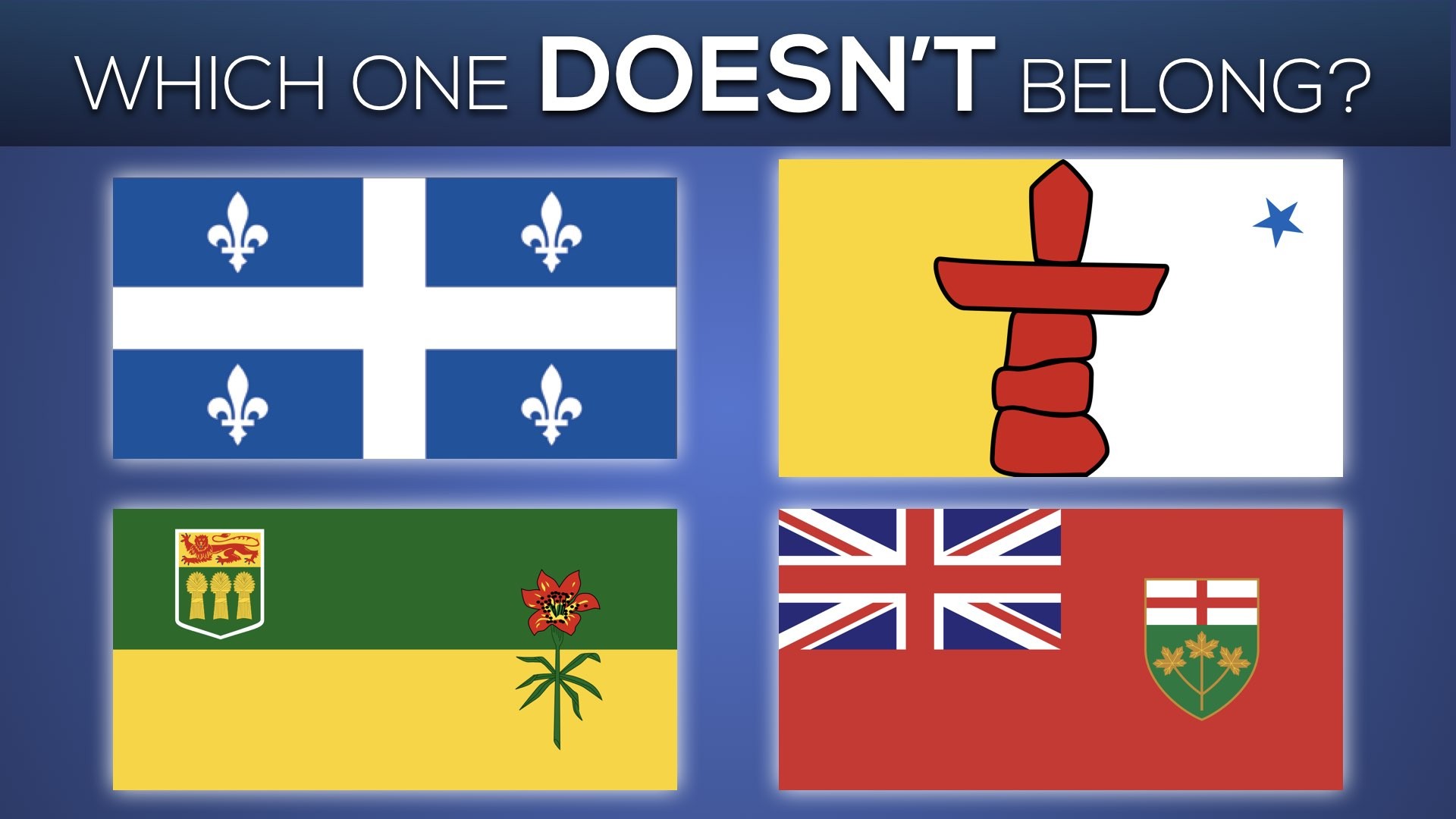
So the question for today is:
How many individual tiles make up this mosaic?
Day 17: Friday June 23rd – How Much Area Does It Cover?
For Day 17, we extend our mathematizing from the Massive Mosaic from last day to this question:
How Much Area Does It Cover?

How Many People Were At The Party?
More interestingly, ask students for their mental/visual math strategies they used to find the answer.
Share student thinking with us on Twitter @Canada150Math and #Canada150Math.
Day 20: Wednesday June 28th – How Many Paddlers?
On the second last day of the #Canada150Math Challenge, we look to a story shared by my friend and colleague, Shelley Pike (GECDSB IT Consultant) from an article she found on Huffington Post titled Peterborough, Ont. Kayakers Break Record For Canada 150.
After doing some digging, I found this Tweet:
#LocknPaddle was a huge success! We were able to fit 150 canoes in each tub of the #Peterborough Lift Lock for #Canada150! pic.twitter.com/ObvZ3sAKoF
— TrentSevern Waterway (@TrentSevernNHS) June 24, 2017
How many paddlers are there?
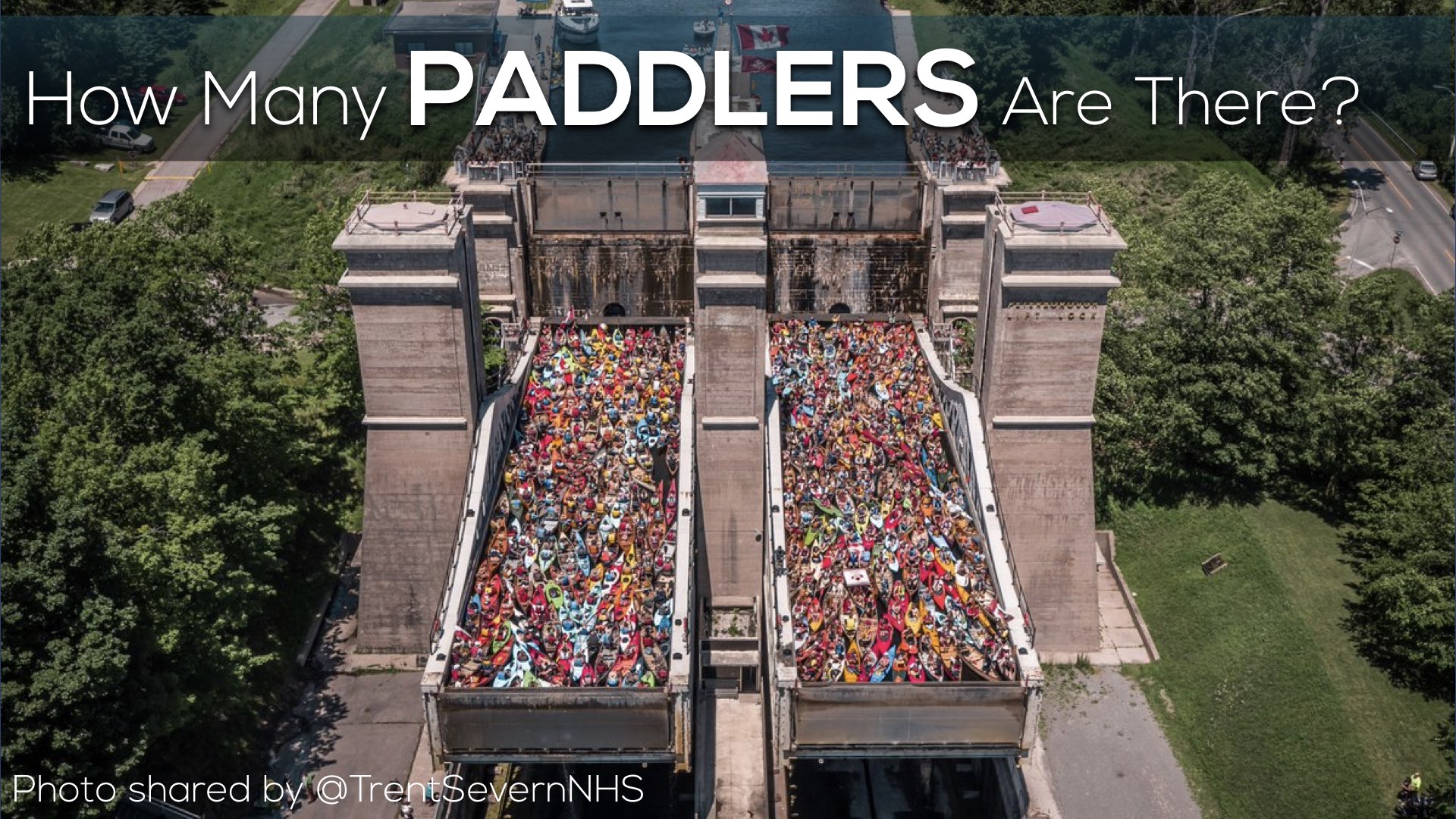
Thanks, Shelley!
Day 21: Thursday June 29th – How Many Winning Rims Are There?
As I was sipping on a hot Tim Horton’s Dark Roast coffee this morning during a meeting, I happened to notice a big “150” on my cup with that familiar yellow arrow we see when it is Roll Up The Rim to Win time here in Canada. Ironically, it was the second last day of the Canada 150 Math Challenge and I wasn’t set on what task I was going to share for the final day of the month long math initiative around Canada’s 150th Birthday. How could I not go with something related to roll up the rim?
While you’ll likely get some great things that students notice and wonder, I’m thinking a great place to start is with:
How many winning rims are there?
Jump into our last task for the Canada 150 Math Challenge by clicking the image or button below.
Have other ideas for the #Canada150Math Challenge? Send them my way and I’ll include them here. While the month of June might be done, we still have many more months in 2017 to celebrate Canada’s 150th Birthday through mathematics!

